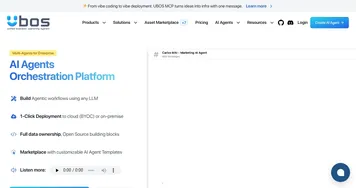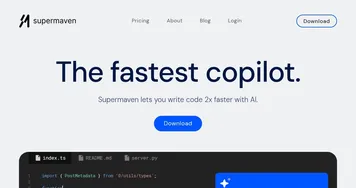Kiro
Kiro is an AI-powered integrated development environment from AWS that enables spec-driven development for software projects from prototype to production. It processes natural language prompts to generate requirements documents with user stories and acceptance criteria using EARS notation, followed by design documents that include data flow diagrams, TypeScript interfaces, database schemas, and API endpoints. The tool then creates a task list for implementation, allowing users to execute tasks step by step with AI agents that edit code across multiple files. Built on Code OSS, the open-source foundation of VS Code, Kiro supports Open VSX extensions, themes, and settings while adding AI-specific features like multimodal chat for text, images, and URLs.
Agent hooks automate tasks triggered by file events such as saves or commits, including generating unit tests, documentation, or performance optimizations. Steering files configure project-specific rules, such as coding standards in tech.md or structure in structure.md, to guide agent behavior. MCP integration connects to external resources like databases and APIs for context. Code diffs appear in real time for approval, editing, or rollback, with autopilot mode handling autonomous script execution. Models include Claude Sonnet 3.7 and 4, with response times of 500-2000ms depending on complexity.
Kiro targets developers handling complex features, outperforming in structured workflows compared to competitors. Cursor provides fast AI autocomplete and multi-file edits in a VS Code-like setup but lacks native spec generation and event-driven hooks. GitHub Copilot offers inline suggestions in various editors like VS Code and JetBrains, focusing on code completion without built-in planning artifacts or automated maintenance. Kiro’s free preview tier limits interactions, with paid plans offering higher quotas at general rates similar to or below competitors for agent usage.
Users appreciate the traceability from specs to code, reducing rework in team settings, and the privacy features that prevent code use in training. Challenges include slower agent execution for intricate tasks, up to several minutes, and limitations with proprietary extensions like Microsoft C# support via Open VSX. It performs best on languages like JavaScript, Python, and TypeScript, with occasional inaccuracies on low-level or niche prompts.
Test Kiro on a contained project to evaluate its fit, starting with spec creation for a feature and monitoring hook efficiency… and take it from there.
Video Overview ▶️
What are the key features? ⭐
- Spec-Driven Development: Converts prompts into requirements, designs, tasks, and code with tests for structured project planning.
- Agent Hooks: Triggers AI actions on file events like saves to automate tests, documentation, or optimizations in the background.
- Multimodal Chat: Processes text, images, URLs, and files for context-aware interactions during development.
- Steering Files: Customizes agent behavior per project with rules for tech stacks, standards, and workflows.
- MCP Integration: Links to external docs, databases, and APIs to enrich AI context and tool access.
Who is it for? 🤔
Examples of what you can use it for 💭
- Solo Developer: Uses spec-driven prompts to outline and implement a full authentication system, generating user stories, designs, and secure code with tests.
- Team Lead: Sets steering files for project standards, then employs agent hooks to auto-review commits and update docs across a shared repo.
- Prototype Builder: Inputs a UI image to create a responsive frontend feature, with Kiro handling layout code and integration tasks autonomously.
- Refactor Engineer: Analyzes legacy code via MCP links to databases, then executes multi-file refactors with diffs for safe approvals.
- Open Source Contributor: Builds a new module from a GitHub issue prompt, using autopilot for script tasks and hooks for compatibility checks.
Pros & Cons ⚖️
- Structured specs reduce errors.
- Automates tests and docs.
- VS Code compatibility.
- Slower on complex tasks.
- Usage limits in preview.
FAQs 💬
Related tools ↙️
-
 UBOS
Simplifies building AI-powered apps with low-code/no-code tools
UBOS
Simplifies building AI-powered apps with low-code/no-code tools
-
 Diffbot
Extracts structured data from websites using AI and machine learning
Diffbot
Extracts structured data from websites using AI and machine learning
-
 Kombai
Converts Figma designs into clean, high-quality frontend code instantly
Kombai
Converts Figma designs into clean, high-quality frontend code instantly
-
 Interview Coder
An AI-powered desktop app designed to assist candidates during technical interviews
Interview Coder
An AI-powered desktop app designed to assist candidates during technical interviews
-
 Browserbase
Powers headless browser automation for AI agents with scalable cloud infrastructure
Browserbase
Powers headless browser automation for AI agents with scalable cloud infrastructure
-
 Supermaven
A code completion tool designed to help developers write code faster
Supermaven
A code completion tool designed to help developers write code faster

